Shoes with motorised laces are "totally not a gimmick" says Nike's Tinker Hatfield
Self-tightening laces and zippers powered by tiny motors could help athletes avoid injury and make life easier for people with disabilities, according to Nike designer Tinker Hatfield.
Advances in "adaptive" technology mean that, in the future, shoes and garments will be able to change shape according to the activity of the wearer, Hatfield said in an interview with Dezeen.
"This is the very beginning of this new technology that will most certainly make its way into apparel and all the things an athlete would wear," the footwear designer said.
Hatfield added that the Hyperadapt 1.0 sneakers with self-tightening laces, which Nike unveiled last week, are "totally not a gimmick".
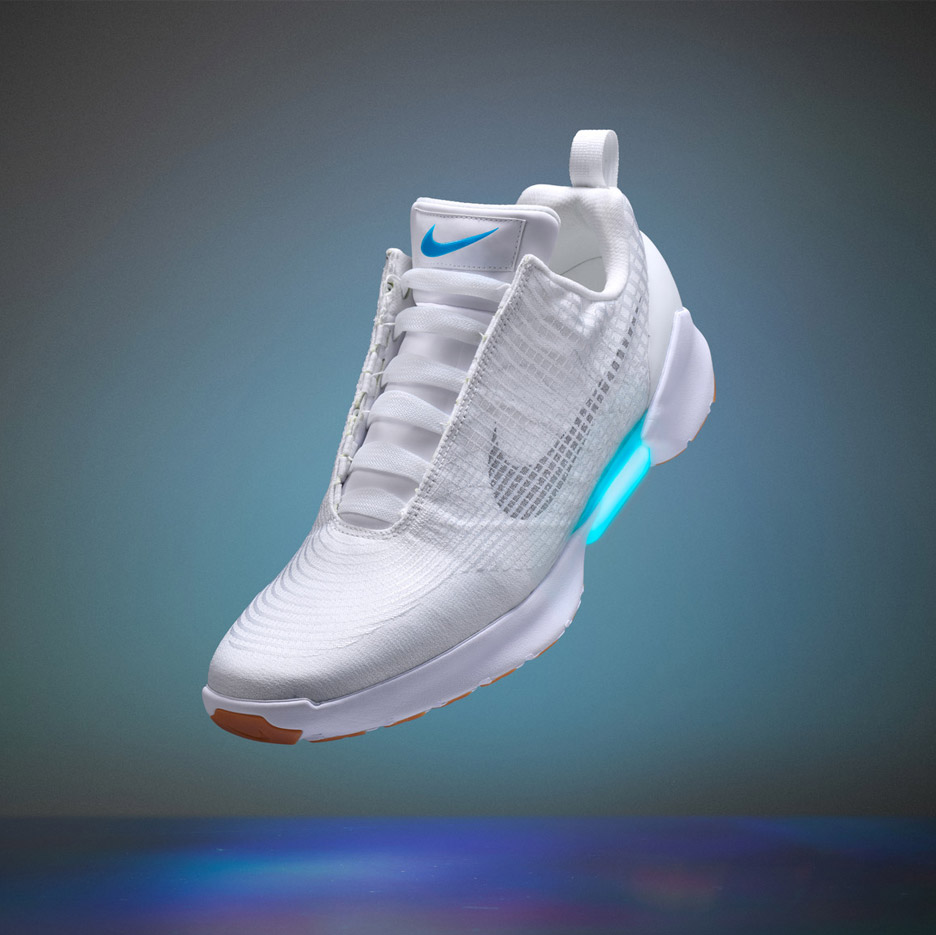
"The materials are changing rapidly," he added. "Sensors are becoming smarter. The motors and the materials are working together better. You'll start to see adaptive ideas popping up in sports apparel and, I suspect, outside sport as well."
Hatfield, 62, said the technology could also benefit people with disabilities and revealed that Nike is also developing a zip that utilises a similar technology.
"A lot of people out there can't tie their shoes and have difficulty getting into their shoes for a variety of reasons," he said. "We have a project that is an advanced zipper. It's all about [helping] what we call 'abilities' people who struggle with normal footwear, to get in and get out [of their shoes]."
Hatfield, Nike's vice president for design and special projects, studied architecture and joined Nike in 1981. He started designing footwear in 1984 and has worked on iconic trainers including the Air Jordan and Air Max lineages.
Hatfield spoke to Dezeen in New York last week at the Nike Innovation Summit, an event that showcased the sportswear brand's latest products.
Among the items unveiled were the Back to the Future-style shoes, which feature motorised laces that automatically close around your feet when you put them on (read about them in detail in our earlier story).
"It doesn't just tighten, it equalises all the pressure," Hatfield explained. "It adapts to the shape of your foot."
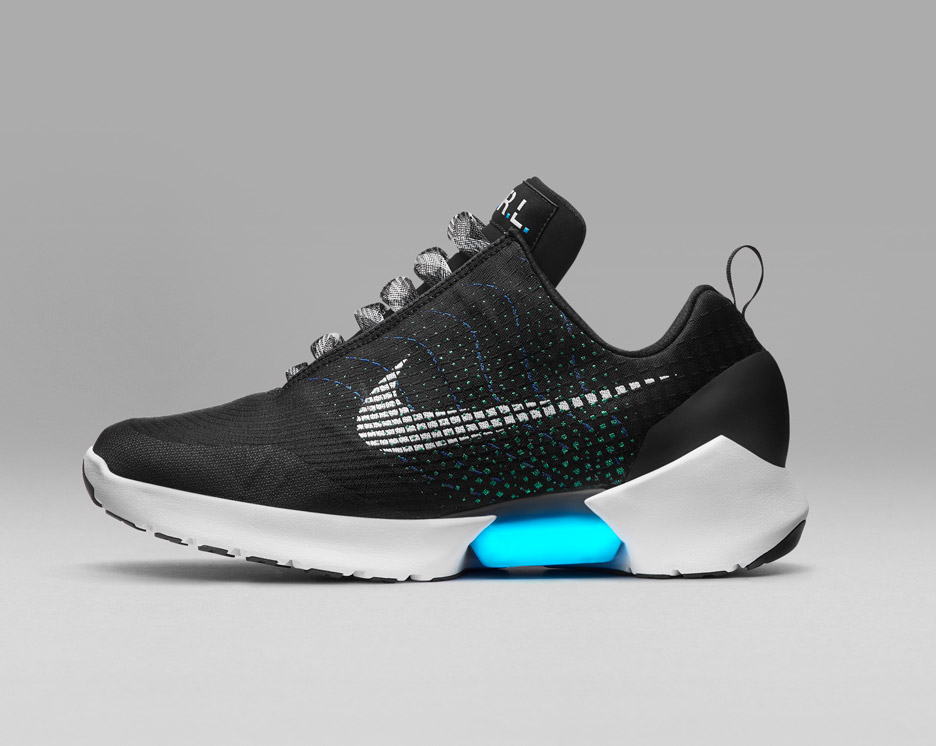
The shoes have buttons on them to tighten and loosen the laces and the batteries, which are mounted in the sole, are recharged wirelessly. Nike expects the shoes to go on sale later this year.
Hatfield said the shoes could benefit sports like basketball, where athletes typically spend around half of the game being inactive.
"The same pair of shoes can be a relaxed, comfortable pair when you're sitting on the bench but as soon as you go into the game the thing wakes up and you're ready to roll," he said. "That is worth a lot to many athletes. We've shown it to professional athletes and the reaction is off the charts."
Ultimately the technology could help athletes perform better as well as prolonging their careers, he said: "We've realised that technology can help people have healthier feet."
"Shoes can help you be a better athlete and maybe have a longer career. You should see the feet of the athletes we work with who've been playing professional sports. Their feet are trashed. Their toes are [crushed], the blood flow is terrible, they have health issues because their shoes don't help them."
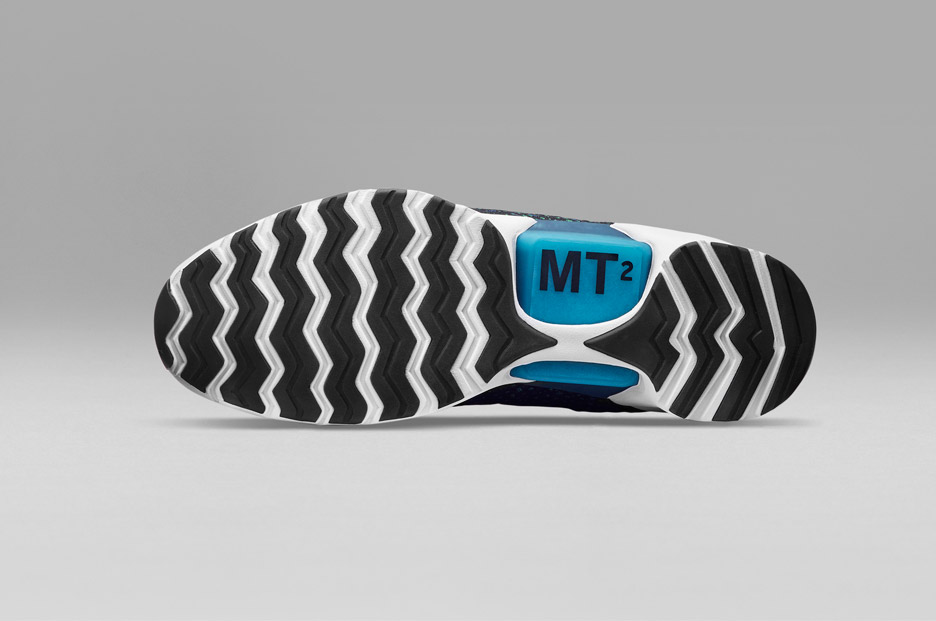
Shoes that use adaptive technology to switch between performance and comfort could "help you get the blood-flow back in your feet, give your feet a break," Hatfield said. "And then of course when you start moving quickly again the shoe goes 'shoooook' and you're back in high performance."
Hatfield made a comparison with automotive design, where reactive technology has the potential to allow vehicles to change shape as they switch from low-speed urban driving to high-speed performance driving - something supercar brand McLaren says it is investigating.
Reactive technology is also transforming architecture, allowing buildings to change shape in response to the climate, for example.
Hatfield said he believed that adaptive technology could prove as useful to athletes as wearable technologies that monitor your performance and provide health data.
The Nike Innovation Summit saw an update of the Nike + app, which brings together fitness tracking and personalised shopping capabilities.
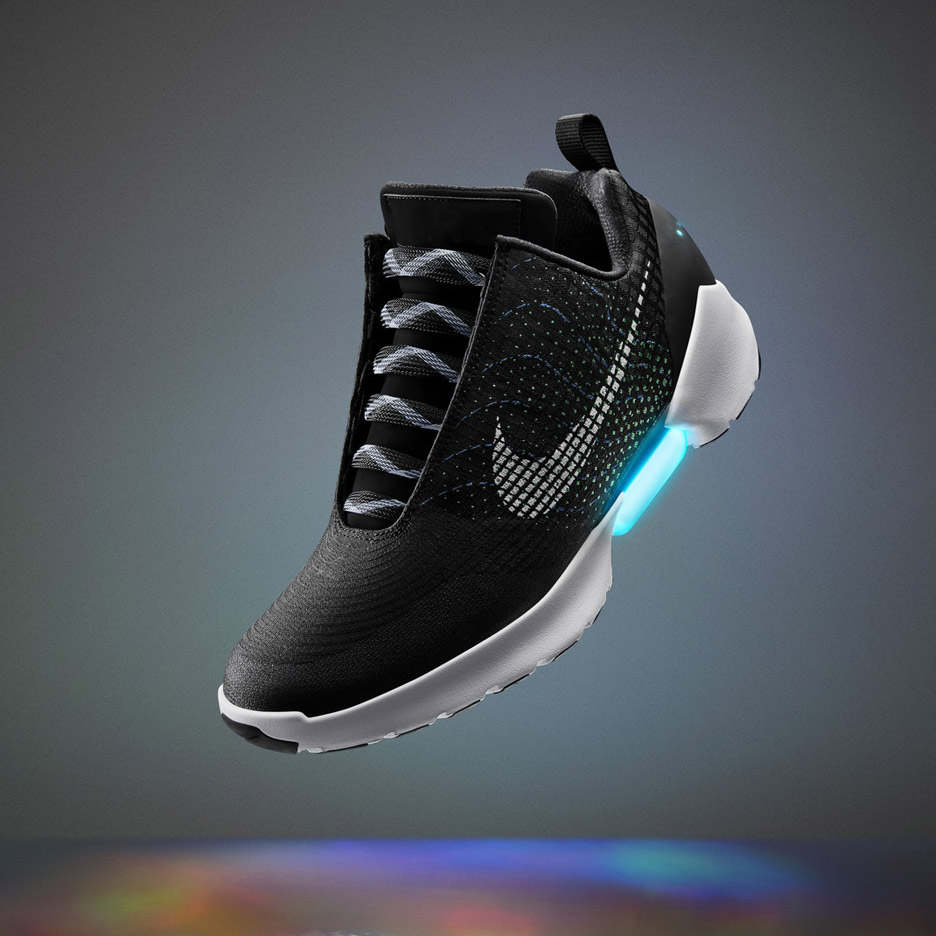
But Hatfield said the brand – which has dropped its wearable fitness-tracking Fuelband product – was more interested in technologies that actively helped improve performance.
"It's been a big vision of mine. Some [companies] are about information and telling you what's going on. There are lots of companies out there, from Fitbit to Apple and other companies… but what we [at Nike] need to focus on is technology that helps you perform."
Referring to monitoring devices such as the Apple Watch he added: "It may tell you a lot but just telling you something isn't enough; we need to actually make you perform better."
The Hyperadapt 1.0 shoes are direct descendants of the Nike Air MAG sneakers that appeared in the 1989 movie Back to the Future II.
Hatfield, who worked with movie studio Universal Pictures at the time, revealed that he first had the idea for the self-lacing shoes and had been waiting ever since for technology to advance enough to make the idea a reality.
"The movie people had nothing to do with coming up with this idea," Hatfield told Dezeen. "It was my design in the movie. I even storyboarded the scene [in which lead character Marty McFly travels forward in time to 2015, where innovations such as self-lacing shoes and hoverboards are commonplace]."
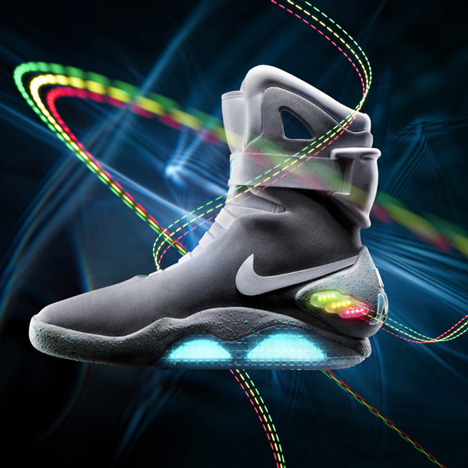
"They asked me personally to design a shoe for the year 2015," Hatfield explained. "And what popped into my head was a shoe that would come alive. That's a Nike-owned concept. It's not Universal's; it's Nike. The exposure that came out of that movie was great; millions and millions of people still see that shoe to this day."
"But we've always thought that this is a Nike performance technology and we've just now gotten to the point where we have the reliable tiny motors and the proper power that doesn't weigh very much so we can get it into a shoe."
"Universal's idea was they wanted magnetic levitation, which is what the hoverboard thing was all about," he continued. "So that's why the shoe's called the MAG. But that just didn't resonate with me as a shoe designer. What does that do for you? So I went down a different path and did my own storyboarding, took it back to the movie people and they thought it was great. But we own all the patents; it's our concept."

"It never really left my head but you get distracted by a lot of things, but we knew at that time that there wasn't any way for us to engineer a shoe like that. It was made for the movie; there were guys pulling on cables underneath the street to get the shoes to look work."
Hatfield insisted that the real-life self-lacing shoes are a serious, performance-driven product.
"We're testing it on basketball players, runners, soccer players," he said. "There's one right here, the best female basketball player in the world, and she's freaked out by it. She can't wait to get these because she would love to be able to adjust the tension in her shoes during the course of a basketball match. It's real."
Like Dezeen on Facebook for the latest architecture, interior and design news »